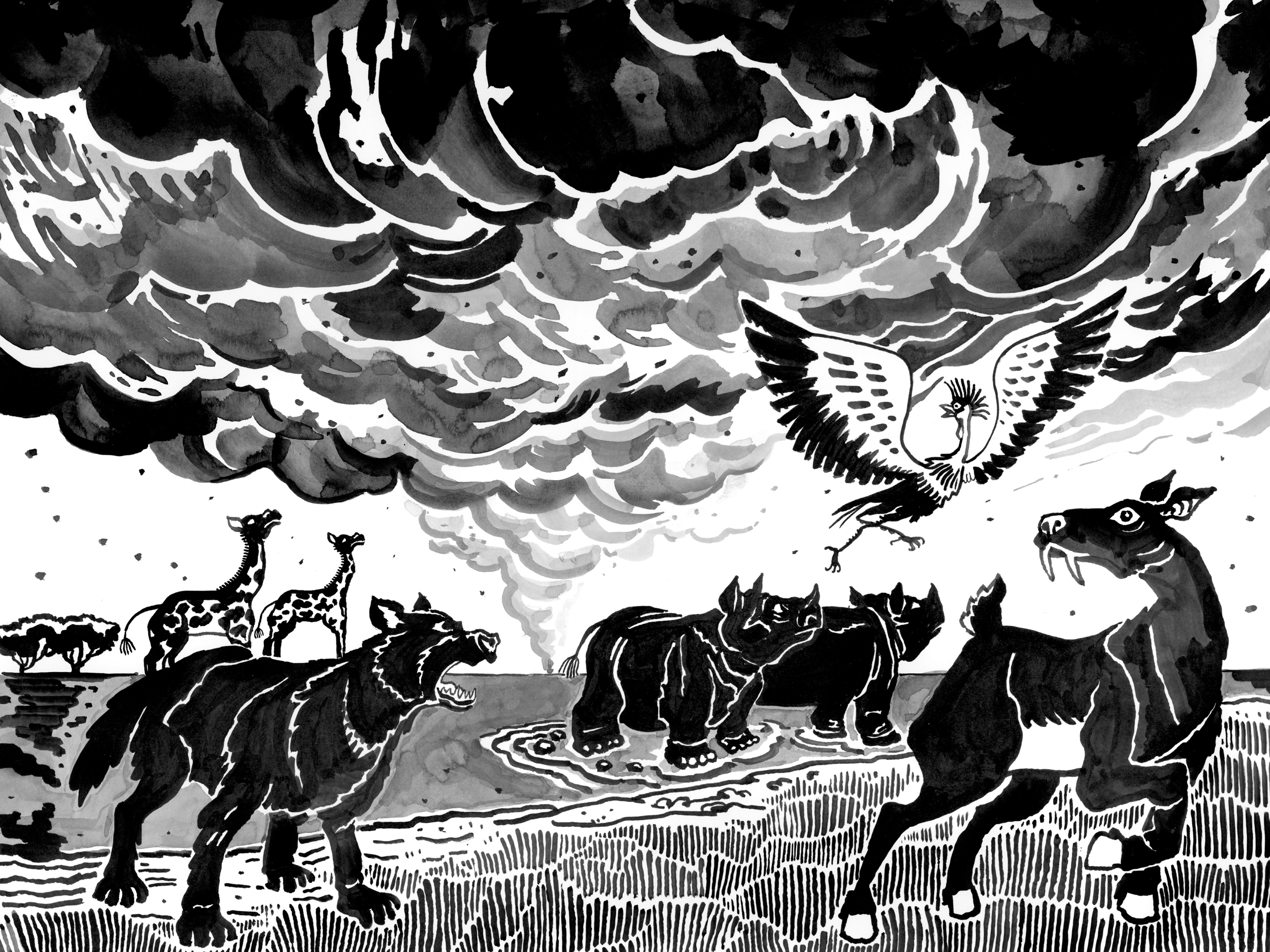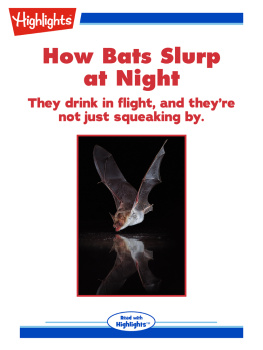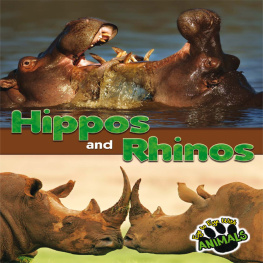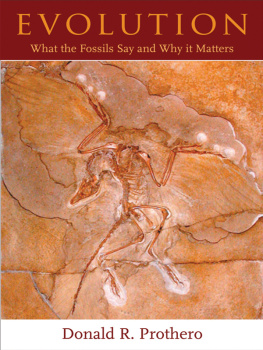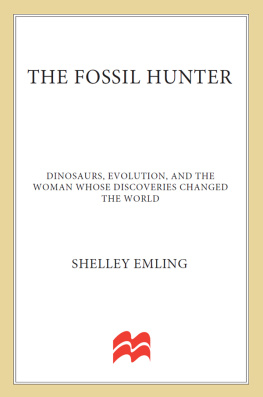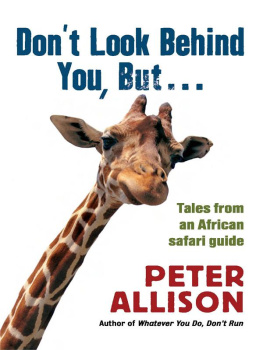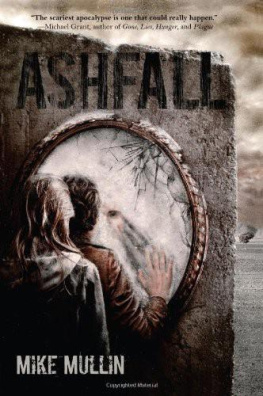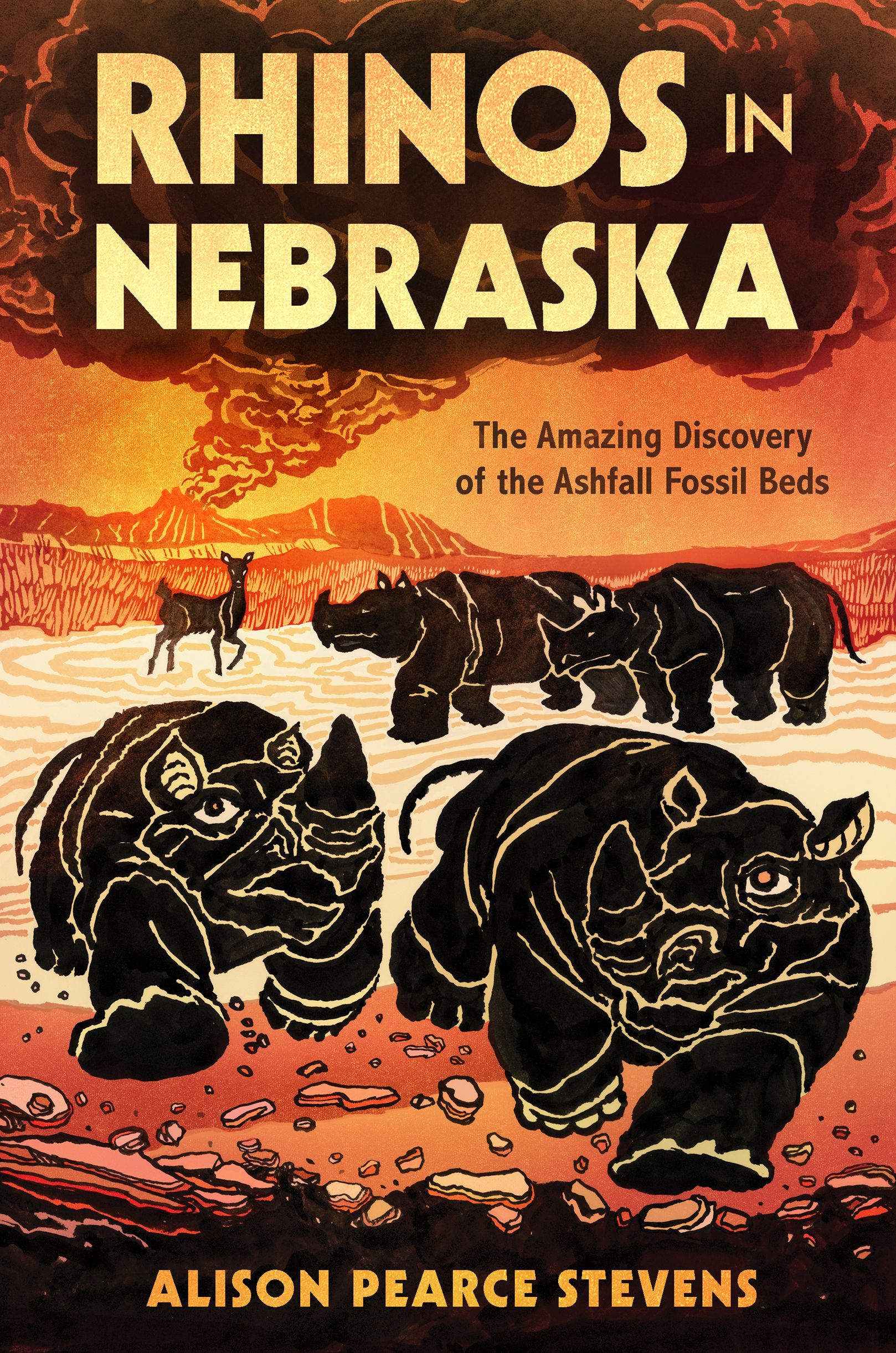The author and publisher have provided this e-book to you for your personal use only. You may not make this e-book publicly available in any way. Copyright infringement is against the law. If you believe the copy of this e-book you are reading infringes on the authors copyright, please notify the publisher at: us.macmillanusa.com/piracy.
Picture this: a vast grassy plain, dotted here and there with trees. A small herd of rhinos thunders by. An elephant trumpets in the distance. A long, giraffe-like neck stretches into the branches of a tree. A herd of grazing mammalsare those zebras?lift their heads, all of them suddenly nervous. And no wonder. An animal that looks a bit like a hyena rustles the grass nearby.

Where is this exotic location?
It must be Africa.
Or is it?
Take a closer look at those animals. The rhinos are definitely rhinos. But with their short, squatty legs and round bodies, they look a bit like hippos.
The elephant, when it lifts its trunk, shows off four tusks, not two. That giraffe, on closer inspection, actually looks kind of like a camel.

And the zebras turn out to be several different kinds of horses. Some are zebra-sized, others the size of small ponies. They all have hooves, but some have three on each foot!

The hyena? Although it has similarly powerful, bone-crushing jaws, this animal is something else entirely. Hyenas arent dogs, but this animal is. Andwhoa! The deer that just bounded by had three horns.
Do you know where you are now?
No?
Would you believe its the middle of North America?
Welcome to Nebraska twelve million years ago.
How do we know that ancient Nebraska used to look like todays African savanna? Through the hard work of many scientists and one extraordinary discovery.
But before we get to that, lets go back to that grassland. Theres a water hole nearby. Its not a proper lake or pond, because it isnt always there. When rain falls, it fills. Animals come by to drink. But when the dry season comes, the water slowly evaporates. It soaks into the ground. After a while, the water hole is nothing more than mud.
Seasons hereboth on the African savanna and in ancient Nebraskaarent determined by warm temperatures versus cold ones. Temps stay mild (above freezing) all year long. Instead, seasons are defined by rainfall, creating a wet season and a dry one. During the dry season, the water hole is an important source of water for the animals that live here. Even those that dont live nearby will travel a long way to visit.
What critters might have come to this ancient place to drink? Rhinos, elephants, horses, and camels of many kinds. Predators, including several kinds of wild dogs, a saber-toothed cat, and a beardog thats neither bear nor dog.


A strange creature called an oreodont.
Deer with three horns or saber teeth. Horned rodents. Birds, turtles, snakes, and more.
Now imagine its an ordinary day for these animals. Theyre doing what animals doeating, drinking, and trying not to become someone elses lunch. Its that time of year when there are lots of mothers with their babies.
Seems peaceful, doesnt it?
But a thousand miles away, trouble is brewing. These animals dont know it, but everything is about to change.
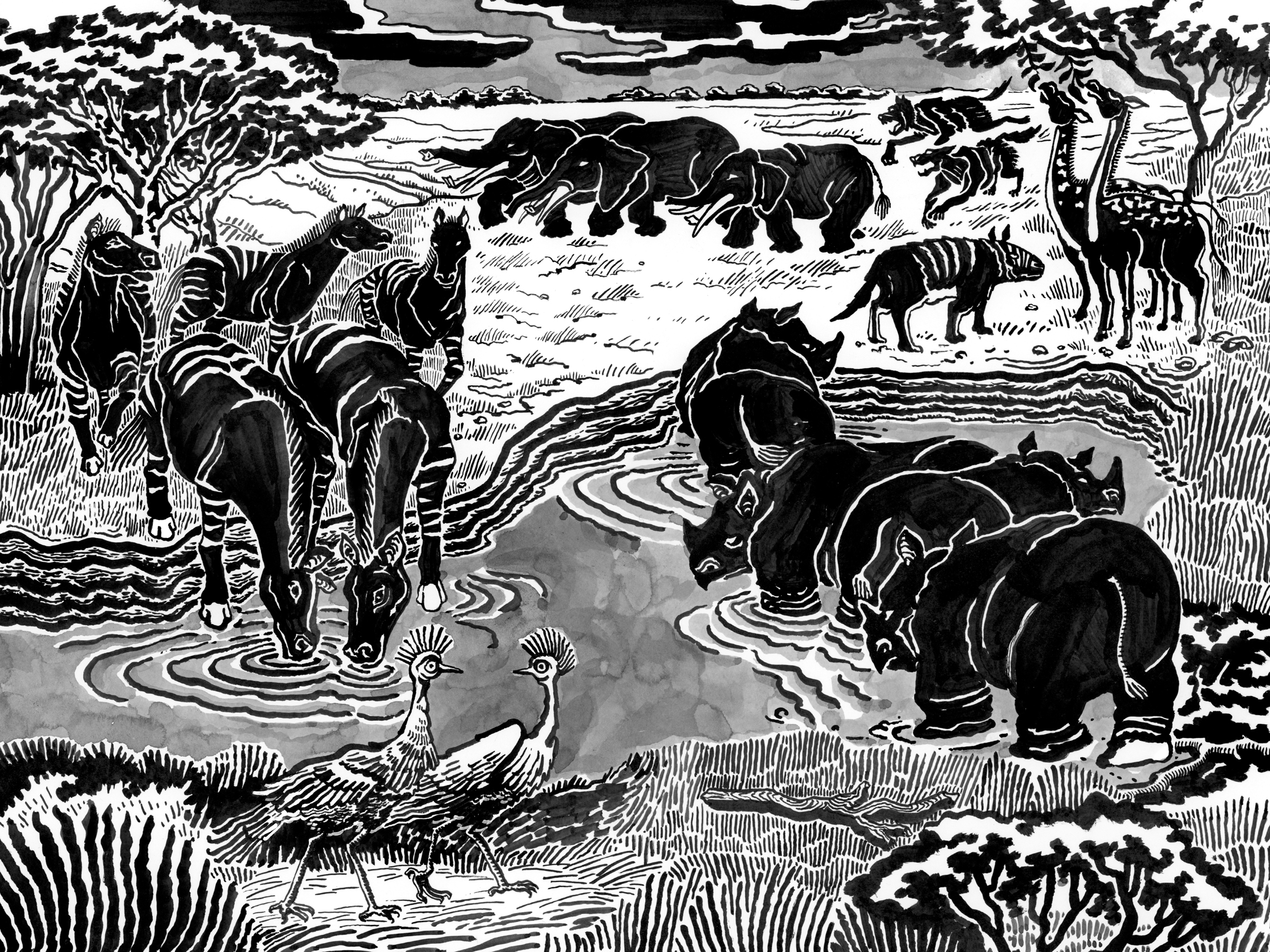
Lets hop to the west, into what we now call Idaho. Deep beneath the earths surface lies a massive chamber. It has been filling with hot molten magma for thousands of years. The superheated rock churns beneath the surface, pressing against the walls of the chamber. The pressure triggers a swarm of earthquakes. The ground shakes again and again as the magma pushes against the underside of the earths surface. It pushes pushes PUSHES until KABOOM!
The volcano explodes. But this is no ordinary volcano; its a supervolcano. Rock, ash, and lava shoot into the sky from one part of the enormous volcano after another. The sky turns dark. There is so much power behind the eruption that rock and ash reach high into the atmosphere before they start raining down again. The area near the supervolcano is obliterated.

Strong winds carry the chunks of rock and ash east. As they go, they continue to fall from the sky, blanketing everything in their path. Bigger pieces fall out sooner, bombarding the ground, burying everything in more than two feet of debris. Lighter ash stays airborne longer, riding the wind current as it travels across the continent. Ash settles out over days and weeks. The wind carries some ash all the way to the Atlantic Ocean, more than two thousand miles away.

Many times larger than the 1980 eruption of Mount St. Helens (depicted in the upper left corner), the supervolcanos ash traveled across the entire continent.
Back at the water hole in the ancient savanna, a cloud of ash appears on the horizon. It may have looked like any other storm when it first appeared, but the animals soon found themselves surrounded by fluffy, gray flakes.
Ash was everywhere. The animals breathed it in. It covered the ground and settled into the water hole. For many of these animals, the ash was a death sentence. Birds, turtles, and other small animals died almost immediately, their sensitive lungs easily damaged. Larger animalsdeer, horses, and camelslasted longer, days or perhaps a few weeks. And the biggestthe rhinoslasted a month or more before the ash did them in.
But how do we know all this? It happened twelve million years ago. No one was there with a video camera or a notebook. In fact, no people existed at all. How can we possibly know what happened to the animals at this water hole at that time?
Welcome to the Ashfall Fossil Beds. They hold the secret of this ancient past. For fifty years, scientists have been uncovering information about what happened in Nebraska during that eruption. They have pieced together a detailed picture of ancient life.
Lets find out how they did it.
